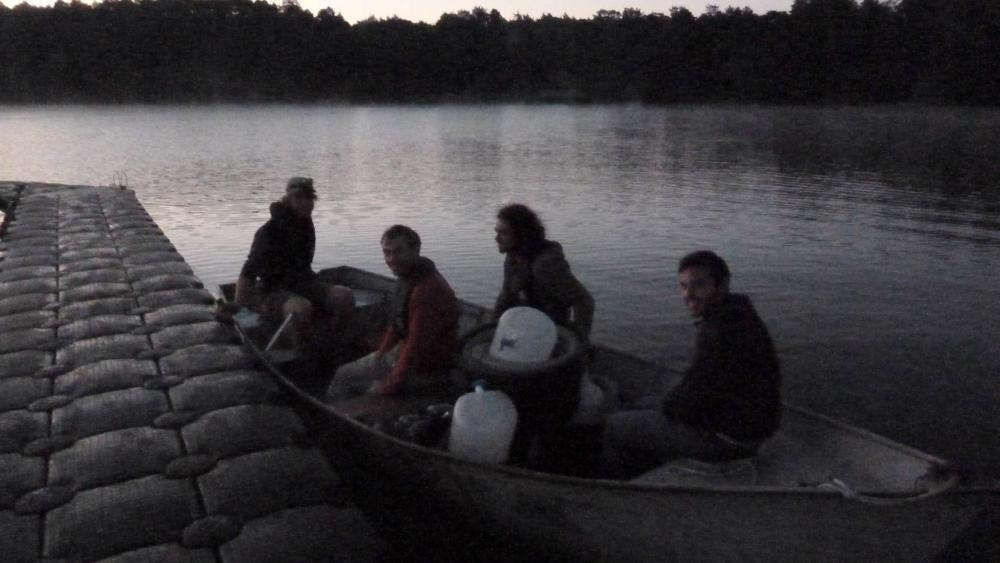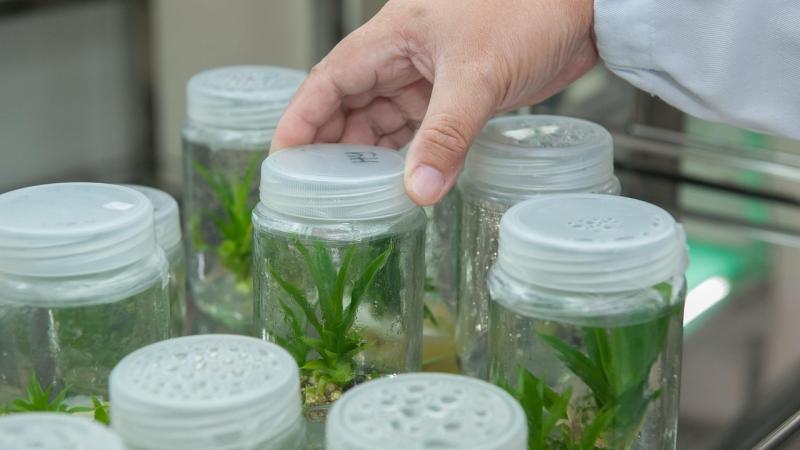
At six o'clock the nightly spooking on the LakeLab is over. The day dawns and the team drives back with the collected water samples. | Photo: Martina Bauchrowitz
Five o'clock in the morning, still completely dark. Down by the lake at the boat house some obscure silhouettes. I launch a "good morning" and recognize the colleagues only by their voices. "If everyone has a life jacket and a head lamp, we can start. Are you ready?", Gabriel singer counts the team comprising eight helpers today. Once arrived at the LakeLab, all are quiet, only far away a tawny owl calls. Everybody knows exactly what to do and they weasel as gray shades with their equipment from enclosure to enclosure. On the work bridges the tubes are rolled out, dropped into the lake and the canister are filled with water. Everything is running smoothly in the dark. Fortunately, the members of the LakeLab team know the research platform and its pitfalls like the back of their hands. After all, the head lamps are only intended for emergencies.
During this year's LakeLab experiment integrated water samples reaching down to 7.5 meters depth are taken weekly in the night from Tuesday to Wednesday shortly before dawn. The water is used to characterize the dissolved organic material as well as the composition and density of the aquatic bacteria. Because the team also gets equivalent samples during the day, it will finally be possible to compare the results both from the day/night samples as well as from the illuminated and non-illuminated enclosures.
"A higher concentration of dissolved organic material available to the bacteria will increase their activity and reproduction", says Gabriel Singer. The IGB scientists expect that lighting alters the complex food web which could indirectly also affect the bacterial community including far-reaching consequences for the composition of the microbial community.



